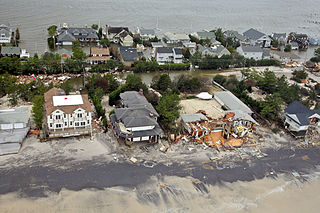Massachusetts was recently struck by Hurricane Sandy, as was most of the east coast. We did pretty well here in Worcester and our hearts are with those who fared much worse than us in New York and New Jersey among other places.
Watching the devastation on television made me take action on two fronts, one: donate money to the Red Cross, and two: make sure my financial house was as ready for an emergency as my physical house was.
Here in Massachusetts we’re preparing for the snow storm season, so it is never too late to start.
For an emergency like the one the east coast just experienced experts recommend, among other things water and food to last about three days, cash and a tank full of gas (http://www.redcross.org/prepare).
What about our financial house? Let’s start with the most immediate needs and think about what should go into an emergency financial kit:
1. Access to cash in an emergency
Keep information about all the accounts that could give you access to cash, this includes checking, savings, money market, and even home equity accounts. You will need the account numbers and contact information for the financial institution. Most often, a copy of a statement will have all the information you need.
You should also consider including a copy of all your credit and debit cards, both front and back. This will give you the information you need to pay in some cases, or to contact the institution should you need to.
2. Medical Information and Caregivers
Your emergency financial kit should also include information about your preferred medical providers. Having their contact information can ensure you are treated by your preferred provider in an emergency, and in some cases, save you money.
3. Insurance Information
Make copies of ALL your insurance cards. Home, car, medical, dental and prescription. If your home or vehicle are damaged, the insurance information in there may be damaged as well, also, if you end up having to evacuate and leave your home or vehicle, you will not want to return just to retrieve these.
Also make sure you have the contact information for your insurance company and agent. Often in an emergency where companies are swamped with requests, your agent can help you get through or connect you to other resources available to you.
4. Longer Term Investments
Your emergency financial kit should also include copies of paperwork documenting your investments accounts. Your investment accounts include IRA, 401(k), stocks, bonds, 529, or any other retirement or long-term savings account. Also include the contact information for any financial planner or planners who manage these accounts for you.
5. Your Estate Planning Documents
Your Will, Health Care Proxy, and Power of Attorney should always be in a safe place, but especially in an emergency. You should place your paperwork in your emergency financial kit, or the information on how to access them, whether they are with your attorney or a safety deposit box etc…
6. Accessing Your Financial Information online
If all the information for accessing you finances and any other important sites are safely locked away in your memory, you may want to consider including the websites and passwords in your emergency kit, or if you do not feel safe carrying that around, you can provide them to a trusted person who is out of harm’s way. This will allow your family to access important information or funds if you are incapacitated, or simply incommunicado.
With the winter upon us here in Massachusetts, and with the painful lessons the Northeast just learned fresh in our memories, now is a great time to look at your emergency plan. If you have not done much in the way of financial or estate planning, now is a good time to think about that as well, and whether your family would be protected in the worst-case-scenario. Call us to discuss your planning and the best way to protect your family in an emergency.


